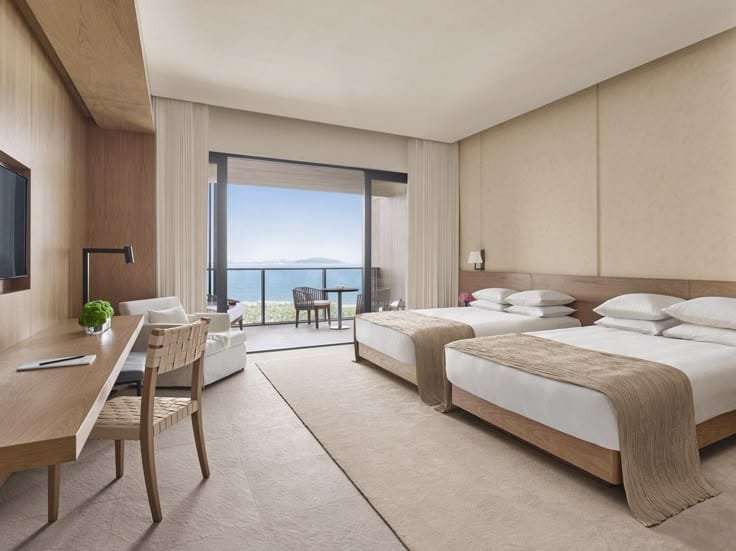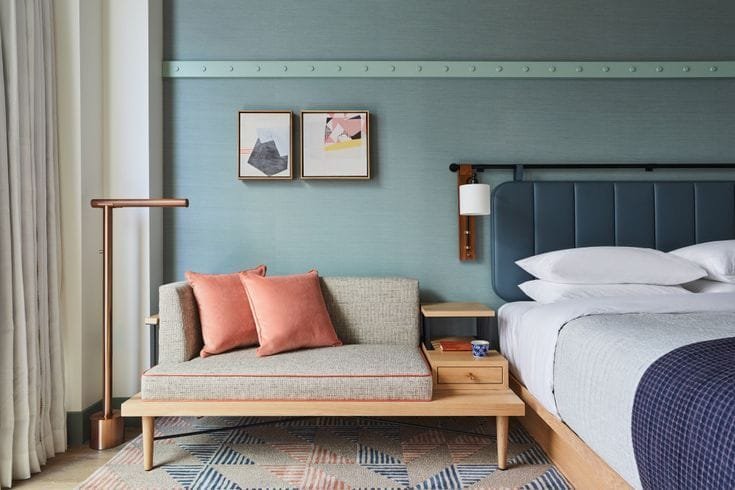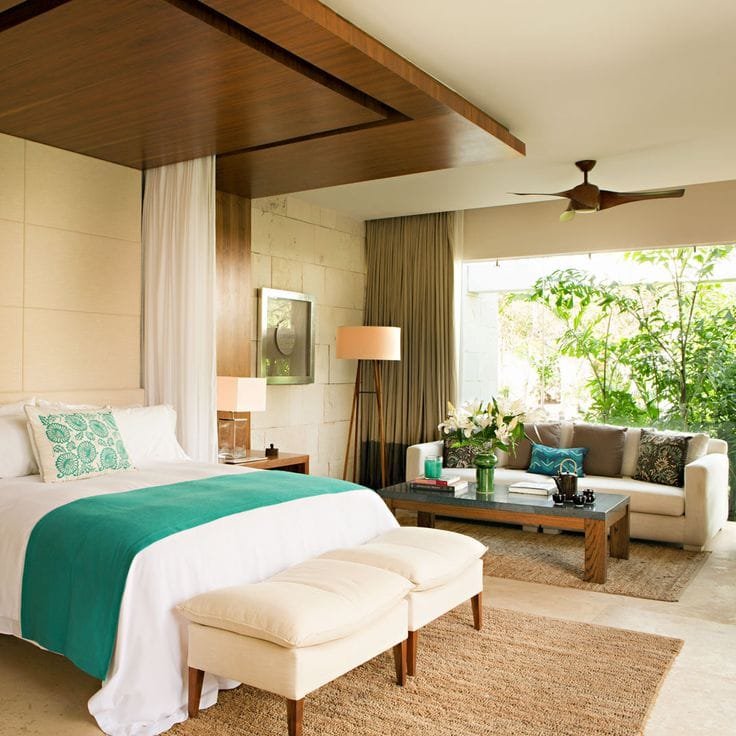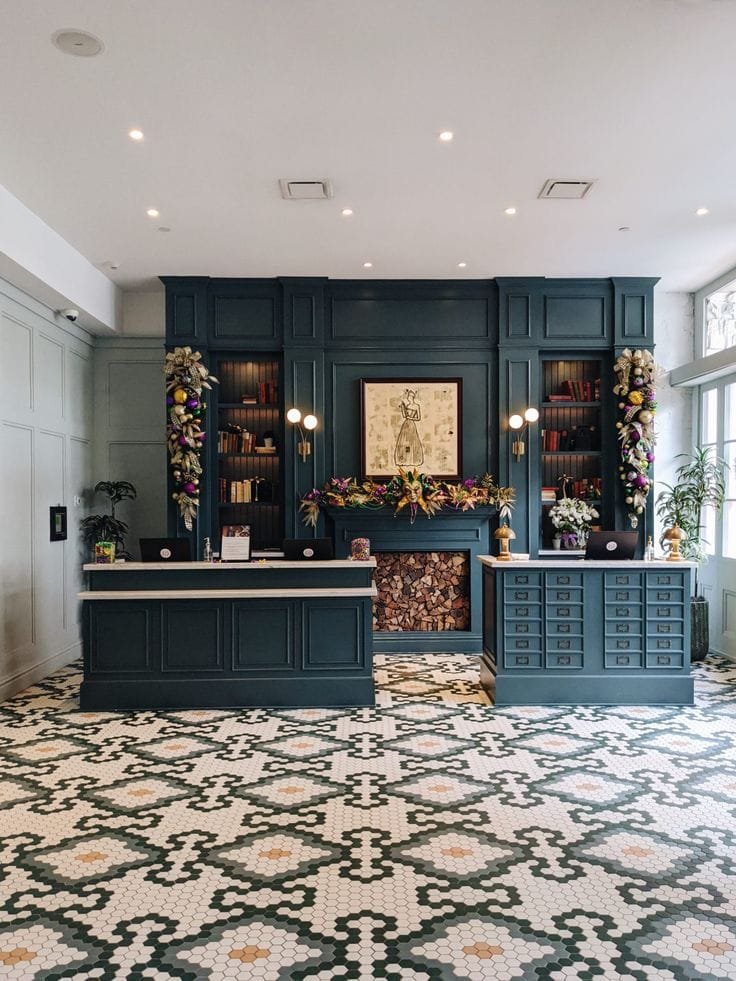Boutique hotel furniture represents the intersection of luxury design, functional excellence, and brand storytelling in the hospitality industry. Unlike standardized chain hotel furnishings, boutique hotel furniture serves as a crucial differentiator that transforms ordinary accommodations into memorable experiences. This comprehensive guide explores the intricate world of boutique hotel furniture selection, from material specifications to cost considerations, providing hotel owners, interior designers, and industry professionals with authoritative insights to create spaces that captivate guests and drive business success.

The boutique hotel furniture market has evolved dramatically, with properties investing between $15,000 to $35,000 per room in high-quality furnishings that reflect their unique brand identity. This investment extends beyond mere aesthetics, encompassing durability, sustainability, and the ability to create Instagram-worthy spaces that generate organic marketing through guest social media sharing. Understanding the nuances of boutique hotel furniture design enables hospitality professionals to make informed decisions that balance initial investment with long-term returns, guest satisfaction, and operational efficiency.
This guide examines five critical aspects of boutique hotel furniture: material selection and quality specifications, design trends and customization strategies, space optimization and functionality requirements, cost analysis and return on investment, and maintenance protocols for longevity. Each section provides practical insights backed by industry expertise, real-world case studies, and comparative analysis to help you navigate the complex landscape of luxury hotel furniture procurement.
Material Selection and Quality Specifications for Boutique Hotel Furniture
The foundation of exceptional boutique hotel furniture lies in meticulous material selection that balances aesthetic appeal, durability, and sustainability. Hardwood furniture remains the gold standard for luxury accommodations, with oak, mahogany, and walnut providing the structural integrity necessary for high-traffic hospitality environments. These materials offer exceptional longevity, with properly maintained solid wood hotel furniture lasting 15-20 years in commercial settings, significantly outperforming engineered alternatives.
Sustainable materials have become increasingly important in boutique hotel furniture manufacturing, with eco-conscious travelers driving demand for responsibly sourced furnishings. Reclaimed wood furniture not only reduces environmental impact but also provides unique character and storytelling opportunities that align with boutique hotels’ emphasis on authenticity. Low-VOC finishes and FSC-certified lumber have transitioned from optional upgrades to standard requirements, reflecting the industry’s commitment to environmental responsibility.
Table 1: Material Performance Comparison for Boutique Hotel Furniture
| Material Type | Durability Rating | Maintenance Level | Sustainability Score | Cost Range |
|---|---|---|---|---|
| Solid Hardwood | 9/10 | Medium | 8/10 | $800-$2,500 |
| Engineered Wood | 7/10 | Low | 6/10 | $300-$800 |
| Metal Framework | 9/10 | Low | 7/10 | $400-$1,200 |
| Reclaimed Wood | 8/10 | Medium-High | 10/10 | $600-$1,800 |
| Composite Materials | 6/10 | Low | 5/10 | $200-$600 |
Upholstery materials require careful consideration for both comfort and maintenance efficiency. High-performance fabrics such as Crypton and Sunbrella offer stain resistance and easy cleaning while maintaining luxury aesthetics. Leather upholstery continues to be a popular choice for its durability and timeless appeal, with full-grain leather providing superior longevity despite higher initial costs. Modern synthetic leather alternatives have achieved remarkable quality improvements, offering similar aesthetics with enhanced stain resistance and reduced maintenance requirements.
Metal components in boutique hotel furniture serve both structural and aesthetic purposes. Powder-coated aluminum provides excellent corrosion resistance for coastal properties, while brass and copper accents add warmth and character to contemporary designs. The integration of smart technology into furniture pieces requires careful consideration of material compatibility, with specialized mounting systems and cable management solutions becoming standard features.
Fire safety compliance represents a non-negotiable aspect of hotel furniture specifications. All upholstered pieces must meet or exceed CAL 117-2013 standards, while structural components require adherence to ASTM and NFPA guidelines. These requirements often influence material selection, favoring naturally fire-resistant materials or those treated with environmentally safe flame retardants.
Design Trends and Customization Strategies

The boutique hotel furniture design landscape for 2025 emphasizes personalization, cultural integration, and multi-functional solutions that maximize space efficiency while creating distinctive brand experiences. Biophilic design elements have emerged as a dominant trend, incorporating natural materials, organic shapes, and living elements that connect guests with nature. This approach extends beyond simple plant integration to include furniture pieces crafted from sustainably harvested materials with visible grain patterns and natural edge details.
Modular furniture systems represent a significant shift in boutique hotel design philosophy, offering flexibility to reconfigure spaces based on occupancy patterns and guest preferences. These systems enable properties to transform lobby areas from co-working spaces during the day to social lounges in the evening, maximizing revenue potential from limited square footage. Convertible furniture pieces such as ottoman storage units that double as seating or coffee tables that extend to dining surfaces provide practical solutions for space-constrained urban properties.
Table 2: 2025 Boutique Hotel Furniture Design Trends
| Trend Category | Key Features | Implementation Cost | Guest Appeal Rating |
|---|---|---|---|
| Biophilic Design | Natural materials, organic shapes | 15-25% premium | 9/10 |
| Smart Integration | USB charging, wireless connectivity | 10-20% premium | 8/10 |
| Modular Systems | Reconfigurable layouts | 20-30% premium | 7/10 |
| Artisan Craftsmanship | Hand-forged details, custom finishes | 30-50% premium | 9/10 |
| Vintage Revival | Mid-century modern, Art Deco influences | 5-15% premium | 8/10 |
Cultural storytelling through furniture selection has become a hallmark of successful boutique hotel design. Properties are increasingly commissioning local artisans to create unique pieces that reflect regional heritage and craftsmanship traditions. The Hotel Emma in San Antonio exemplifies this approach, featuring custom furniture crafted from reclaimed materials from the building’s historic brewery past, creating authentic connections between guests and local history.
Color psychology plays a crucial role in boutique hotel furniture selection, with earth tones and muted palettes dominating contemporary designs. Deep terracotta, sage green, and warm grey create calming environments that promote relaxation while providing sophisticated backdrops for social media photography. Bold accent pieces in jewel tones add visual interest without overwhelming spaces, allowing properties to refresh their aesthetic through accessories rather than complete furniture replacement.
Customization capabilities have become essential differentiators in the boutique hotel furniture market. Leading manufacturers now offer extensive personalization options including custom sizing, unique fabric combinations, and branded hardware details that reinforce property identity. The Ace Hotel chain has successfully leveraged custom furniture design to create consistent brand recognition across diverse markets while allowing each property to reflect local character through material and color selections.
Technology integration represents both an opportunity and a challenge in boutique hotel furniture design. Guests expect seamless connectivity options, requiring furniture pieces to incorporate charging stations, wireless connectivity, and smart controls without compromising aesthetic appeal. Hidden cable management systems and discrete power outlets maintain clean design lines while providing essential functionality.
Space Optimization and Functionality Requirements
Space efficiency in boutique hotel furniture design requires sophisticated understanding of guest behavior patterns and operational workflows. Unlike larger chain properties with abundant square footage, boutique hotels must maximize every inch while maintaining the intimate atmosphere that defines their appeal. Multi-functional furniture pieces serve as the cornerstone of effective space utilization, with each item ideally serving 2-3 distinct purposes throughout the guest experience.
Guest room optimization begins with careful analysis of traffic patterns and activity zones. The bed area requires 36 inches of clearance on the primary access side for comfortable movement, while work areas need adequate task lighting and ergonomic seating positioned to minimize glare on electronic screens. Storage solutions must be both accessible and discrete, with built-in wardrobes and under-bed storage maximizing capacity without creating visual clutter.

Table 3: Space Allocation Guidelines for Boutique Hotel Rooms
| Room Element | Minimum Space Required | Optimal Dimensions | Furniture Pieces |
|---|---|---|---|
| Sleeping Area | 8′ x 10′ | 10′ x 12′ | Bed, nightstands, reading lights |
| Work Zone | 4′ x 6′ | 6′ x 8′ | Desk, chair, task lighting |
| Seating Area | 6′ x 8′ | 8′ x 10′ | Lounge chair, side table, ottoman |
| Storage Area | 3′ x 6′ | 4′ x 8′ | Wardrobe, luggage rack, shelving |
| Circulation | 3′ width | 4′ width | Clear pathways between zones |
Lobby and common area design requires balancing social interaction with operational efficiency. Conversation groupings should accommodate 2-4 people comfortably while allowing easy reconfiguration for larger gatherings or private meetings. Bar-height seating encourages social interaction and maximizes capacity during peak periods, while intimate lounge areas provide quiet spaces for work or relaxation.
The Freehand Los Angeles demonstrates exceptional space optimization through its innovative use of modular seating systems in the lobby area. Custom-designed pieces can be quickly reconfigured to accommodate different group sizes and activities, from morning co-working sessions to evening social events. This flexibility maximizes revenue potential while maintaining the property’s distinctive bohemian aesthetic.
Accessibility compliance represents a crucial consideration in boutique hotel furniture selection, with ADA requirements influencing everything from furniture height to clearance dimensions. Counter heights must not exceed 36 inches, while seating areas require 30-inch clear width for wheelchair access. These requirements need not compromise design aesthetic, with many contemporary pieces naturally meeting accessibility standards through thoughtful proportions and clean lines.
Outdoor furniture integration extends usable space and creates additional revenue opportunities through al fresco dining and event hosting. Weather-resistant materials such as powder-coated aluminum, teak, and all-weather wicker maintain appearance and functionality across seasonal variations. The Surfjack Hotel & Swim Club in Honolulu exemplifies successful indoor-outdoor integration, using consistent furniture styling to create seamless transitions between lobby, poolside, and dining areas.
Storage optimization requires creative solutions that maintain aesthetic appeal while providing essential functionality. Hidden storage compartments in ottomans, benches, and bed bases maximize capacity without visual impact. Custom millwork can integrate storage solutions directly into room architecture, creating clean lines while providing ample space for guest belongings and operational supplies.
Cost Analysis and Return on Investment

Boutique hotel furniture investment requires sophisticated financial analysis that considers initial costs, operational savings, and revenue enhancement potential. Industry benchmarks indicate that furniture, fixtures, and equipment (FF&E) typically represent 8-12% of total project costs for boutique properties, with luxury establishments investing up to $35,000 per room in furnishings and accessories. This substantial investment demands careful evaluation of long-term returns through guest satisfaction, operational efficiency, and brand differentiation.
Initial procurement costs vary significantly based on material selection, customization level, and manufacturing approach. Mass-produced furniture offers lower upfront costs but may lack the distinctive character essential to boutique hotel positioning. Custom-manufactured pieces command premium pricing but provide unique design elements that support higher average daily rates and improved guest satisfaction scores. The decision between these approaches should consider total cost of ownership rather than initial purchase price alone.
Table 4: Boutique Hotel Furniture Cost Analysis by Category
| Furniture Category | Budget Range | Mid-Range | Luxury Range | Expected Lifespan |
|---|---|---|---|---|
| Guest Room Set | $8,000-$12,000 | $15,000-$25,000 | $30,000-$50,000 | 8-12 years |
| Lobby Seating | $15,000-$25,000 | $35,000-$55,000 | $75,000-$125,000 | 10-15 years |
| Dining Furniture | $12,000-$20,000 | $25,000-$40,000 | $50,000-$85,000 | 7-10 years |
| Outdoor Pieces | $8,000-$15,000 | $18,000-$30,000 | $35,000-$60,000 | 5-8 years |
| Custom Millwork | $10,000-$18,000 | $25,000-$45,000 | $60,000-$100,000 | 15-20 years |
Operational cost considerations extend beyond initial purchase to include maintenance, replacement, and opportunity costs. High-quality furniture requires less frequent replacement and generates lower maintenance expenses, offsetting higher initial investment through reduced lifecycle costs. Properties investing in premium furnishings typically experience 25-30% lower maintenance costs compared to budget alternatives, while achieving superior guest satisfaction ratings that support premium pricing strategies.
Revenue enhancement potential represents the most significant return on boutique hotel furniture investment. Properties with distinctive, high-quality furnishings command average daily rate premiums of 15-25% compared to properties with standard commercial furniture. The Virgin Hotels Chicago demonstrates this principle, using custom-designed furniture throughout the property to support room rates 20% above market average while maintaining occupancy levels exceeding 85%.
Brand differentiation value through unique furniture selection enables properties to capture market share in competitive environments. Custom furniture programs create distinctive visual signatures that enhance brand recognition and support marketing efforts. The cost of custom design and manufacturing should be evaluated against marketing expenditure savings and increased direct booking conversion rates.
Financing strategies for boutique hotel furniture procurement include traditional bank financing, equipment leasing, and supplier financing programs. Leasing arrangements can reduce initial capital requirements while providing flexibility for periodic updates and technology integration. Many furniture manufacturers offer financing programs with competitive rates and terms specifically designed for hospitality applications.
Case Study: The Hoxton Hotel London invested £2.8 million in custom furniture and design elements across 210 rooms, achieving average daily rates 35% above market comparable properties. The investment generated positive cash flow within 18 months through increased occupancy and rate premiums, while reducing annual maintenance costs by £185,000 compared to previous standard furniture package. This example demonstrates how strategic boutique hotel furniture investment can drive both short-term returns and long-term operational savings.
Maintenance and Longevity Strategies

Preventive maintenance programs for boutique hotel furniture significantly extend lifespan while preserving aesthetic appeal and guest satisfaction. Industry best practices indicate that systematic maintenance protocols can extend furniture lifespan by 40-60% compared to reactive maintenance approaches. Professional maintenance schedules should be established during initial procurement, with manufacturer warranties often requiring adherence to specific care protocols to maintain coverage.
Daily maintenance routines performed by housekeeping staff focus on surface cleaning, spot treatment, and basic damage prevention. Microfiber cleaning cloths and pH-neutral cleaners protect finishes while removing common soils and contaminants. Staff training programs should emphasize proper cleaning techniques for different materials, with specific protocols for wood, metal, and upholstered surfaces to prevent damage from inappropriate cleaning products or methods.
Weekly maintenance tasks include detailed inspection of high-wear areas, hardware tightening, and preventive treatments. Joint lubrication on moving parts prevents premature wear and maintains smooth operation. Fabric protection treatments should be reapplied quarterly to maintain stain resistance and extend upholstery life. These routine maintenance activities require minimal time investment but provide substantial returns through extended furniture longevity.
Table 5: Boutique Hotel Furniture Maintenance Schedule
| Maintenance Task | Frequency | Staff Required | Time Investment | Cost Impact |
|---|---|---|---|---|
| Surface Cleaning | Daily | Housekeeping | 15 min/room | Minimal |
| Hardware Inspection | Weekly | Maintenance | 30 min/room | Low |
| Deep Cleaning | Monthly | Professional | 2 hours/room | Moderate |
| Protective Treatments | Quarterly | Specialist | 1 hour/piece | High |
| Professional Restoration | Annual | Manufacturer | Variable | Very High |
Environmental factors significantly impact furniture longevity in hospitality settings. Humidity control between 30-50% prevents wood warping and joint failure while reducing upholstery mold and mildew issues. UV protection through window treatments and protective coatings prevents fading and material degradation, particularly important for pieces positioned near windows or in bright lobby areas.
Guest education plays an often-overlooked role in furniture preservation. Discrete signage and in-room materials can inform guests about proper use of adjustable furniture, technology features, and care instructions for delicate surfaces. Properties report 20-30% reduction in furniture damage claims after implementing guest education programs.
The Standard High Line New York has achieved exceptional furniture longevity through comprehensive maintenance protocols and staff training programs. Their approach includes quarterly professional inspections, preventive treatments every six months, and immediate repair protocols for minor damage. This systematic approach has extended average furniture lifespan to 12-15 years while maintaining like-new appearance throughout the property.
Restoration versus replacement decisions require careful cost-benefit analysis considering furniture age, repair costs, and opportunity costs of room closure during restoration. Professional restoration services can often restore high-quality pieces to like-new condition at 30-40% of replacement cost. However, restoration should be weighed against potential revenue loss during extended room closures and the marketing value of updated design elements.
Warranty management represents a crucial aspect of furniture longevity strategy. Comprehensive warranty programs should cover manufacturing defects, normal wear parameters, and maintenance requirements. Leading furniture manufacturers offer extended warranty programs that include periodic professional maintenance visits and priority repair services. These programs often provide superior value compared to third-party service contracts while ensuring adherence to manufacturer specifications.
Conclusion
Boutique hotel furniture selection represents a complex intersection of design philosophy, operational requirements, and financial strategy that demands expertise across multiple disciplines. The successful implementation of distinctive furniture programs requires careful consideration of material specifications, design trends, space optimization, cost implications, and maintenance protocols to create cohesive guest experiences that support business objectives.
The investment in high-quality boutique hotel furniture typically generates returns through multiple channels: enhanced guest satisfaction leading to higher rates and occupancy, reduced operational costs through improved durability, and increased brand differentiation supporting market positioning. Properties that approach furniture selection strategically, considering both aesthetic and functional requirements, consistently outperform competitors using generic commercial furnishings.
Emerging trends in boutique hotel furniture design emphasize sustainability, technology integration, and cultural authenticity, reflecting evolving guest expectations and market positioning strategies. Properties that anticipate these trends through forward-thinking furniture programs position themselves advantageously for long-term success in increasingly competitive markets.
Professional guidance from experienced designers, manufacturers, and hospitality consultants proves invaluable in navigating the complex landscape of boutique hotel furniture procurement. The substantial investment required and long-term operational implications make expert consultation a worthwhile expense that often pays for itself through improved decision-making and vendor negotiations.
Ultimately, boutique hotel furniture serves as both a functional necessity and a powerful branding tool that influences every aspect of the guest experience. Properties that recognize this dual role and invest appropriately in distinctive, high-quality furnishings create sustainable competitive advantages that translate directly to financial performance and market position.
FAQ Section
What is the typical lifespan of boutique hotel furniture in commercial settings?
High-quality boutique hotel furniture typically lasts 8-15 years in commercial hospitality environments, significantly longer than budget alternatives that may require replacement every 3-5 years. Solid hardwood pieces can achieve 15-20 year lifespans with proper maintenance, while upholstered items generally require replacement every 7-10 years due to fabric wear and hygiene considerations. The actual lifespan varies based on guest volume, maintenance protocols, and initial quality levels, making preventive care programs essential for maximizing furniture investment returns.
How much should boutique hotels budget for furniture per room?
Boutique hotel furniture budgets typically range from $15,000 to $35,000 per room, depending on luxury level and customization requirements. Budget-conscious properties may achieve attractive results with $8,000-$12,000 investments through careful vendor selection and strategic material choices. Luxury boutique properties often exceed $50,000 per room when including custom millwork and unique design elements. These figures should be evaluated as percentage of total project costs, typically representing 8-12% of overall development investment.
What are the most durable materials for high-traffic boutique hotel applications?
Solid hardwoods including oak, maple, and walnut provide exceptional durability for high-traffic boutique hotel environments, with proper maintenance enabling 15-20 year lifespans. Commercial-grade upholstery fabrics such as Crypton and solution-dyed acrylics offer superior stain resistance and cleanability while maintaining luxury aesthetics. Powder-coated metal frames provide excellent structural support and corrosion resistance, particularly important for coastal properties or high-humidity environments. Engineered materials can offer good durability at lower cost points but may lack the character and longevity essential to boutique positioning.


